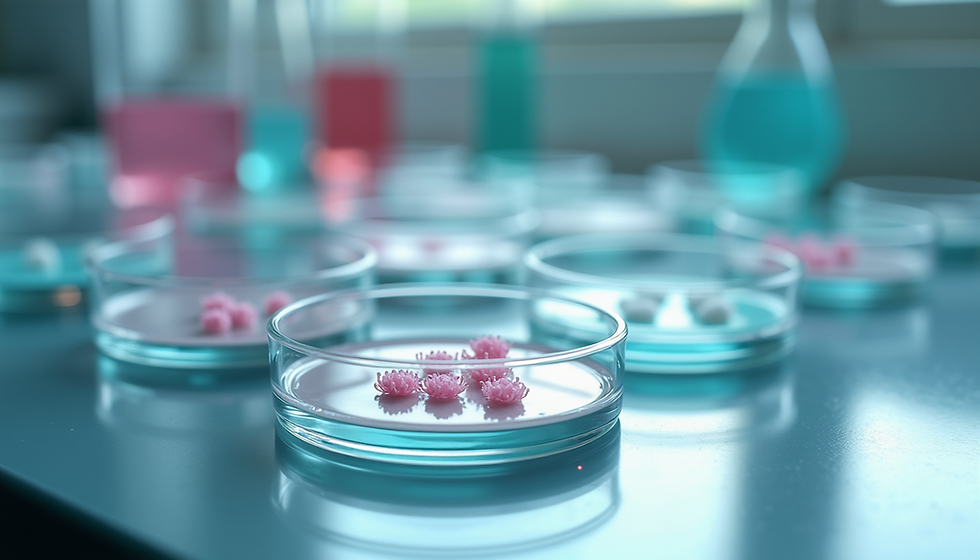Exploring How Tesla Optimus Transforms My Journey Through Stroke Recovery and Assistance
- Franco Arteseros
- May 22
- 4 min read

As a stroke survivor, my recovery has been one of the hardest challenges I've ever faced. Every day brings new hurdles, but I remain focused on regaining my independence and living my life to the fullest. Recently, I came across an exciting development that could dramatically shape my recovery: the Tesla Optimus Robot. This humanoid, AI-powered assistant offers more than just innovation; it has the potential to revolutionize the rehabilitation process for people like me.
The Promise of Tesla Optimus
Imagine a world where advanced robotics are part of our everyday life. The Tesla Optimus has been created to assist people who have experienced strokes. From providing mobility support to helping with daily chores, this robot could make a significant difference in the lives of stroke survivors. Studies show that integrating technology into rehabilitation can increase recovery rates by over 30%. Optimus symbolizes how technology can offer personalized care and enhance recovery efforts.
Mobility Support: A New Lease on Life

Regaining mobility truly tested my endurance during recovery. Tasks like walking to the kitchen or squeezing toothpaste became daunting challenges. With its state-of-the-art robotics, Tesla Optimus could help with physical tasks. For example, it could provide the stability needed while I navigate my home. Just the idea of having a partner to assist me with balance gives me hope.


With its adaptive learning features, Tesla Optimus could assess my physical limitations and offer support tailored to my specific challenges. This personalized approach ensures that the robot doesn't just act mechanically but becomes a supportive partner in my daily routines. Its precise movements might provide the gentle guidance I need to regain confidence as I work to improve my mobility.
Daily Task Assistance: Regaining Independence
The loss of independence is one of the most difficult parts of stroke recovery. Everyday chores can feel overwhelming and draining. Imagine having a helper like Tesla Optimus that could remind me to take medications, prepare simple meals, or assist with laundry. Just having support for such tasks can make a significant difference in my quality of life.

Optimus could learn my daily routines, breaking down tasks into smaller steps to match my current capabilities. For instance, if I needed to prepare breakfast, it could guide me by filling a pan with water or checking on cooking times. This approach helps me engage in activities I enjoy instead of feeling buried under household chores.
Cognitive Engagement: Advancing Stroke Recovery
Physical recovery is critical, but cognitive engagement is equally important in the healing process. Tesla Optimus could provide tailored cognitive exercises suited to my needs. These might include memory games or interactive conversations designed to boost focus and cognitive skills. By transforming therapy into a fun activity, the robot can make recovery feel less like a chore and more uplifting.

Having a companion for conversation or problem-solving tasks can combat feelings of isolation that often arise during rehabilitation. This interaction could encourage mental agility, fostering a positive environment for growth during recovery.
Real-Time Monitoring: Keeping Safety in Mind
Tesla Optimus excels in real-time patient monitoring as well. As someone recovering from a stroke, I often worry about potential emergencies. Equipped with sensors, Optimus could track my heart rate, activity levels, and overall wellbeing, alerting caregivers when needed.


This monitoring capability allows caregivers to intervene quickly if any concerning changes occur, adding a crucial layer of safety to my recovery process. Knowing that someone is watching over me provides comfort, allowing me to concentrate on healing rather than worrying about unexpected health issues.
The Road Ahead: How Close Are We?

While the idea of integrating Tesla Optimus into recovery may seem far off, advancements in robotics and AI are accelerating quickly. Although Optimus is in development, its potential applications in healthcare suggest a bright future. Increasingly, hospitals are exploring how robots can help assist with patient care, and early test cases show a positive rise in patient satisfaction.

Although not available to everyone yet, every innovation in assistive robotics is a step toward greater independence for stroke survivors. The collaboration between technology developers and healthcare experts is paving the way for a future where recovery is not just an uphill battle but a journey filled with possibilities.
A Vision for the Future
Reflecting on my journey through stroke recovery, it is clear that tools like the Tesla Optimus Robot could lead to newfound freedom and an improved quality of life. The thought of having an intelligent assistant fills me with hope. From aiding mobility to providing cognitive engagement and real-time monitoring, this technology has the potential to reshape rehabilitation outcomes significantly.
While we may still be waiting for advanced robotics to reach widespread use, the road to recovery is ever-evolving. Each breakthrough brings the chance for stroke survivors like me to reclaim our independence, face life's challenges head-on, and thrive. The outlook is encouraging, and I am eager to see how technologies like Tesla Optimus will enhance the journey of stroke recovery and assistance.
Franco Arteseros...






















As a scholar deeply engaged in the intersection of artificial intelligence and rehabilitation sciences, I find your exploration of Tesla Optimus’ potential role in stroke recovery both compelling and timely. Your discussion underscores the critical advancements in humanoid robotics and their ability to bridge the gap between technological innovation and patient-centered care.
The emphasis on mobility support and cognitive engagement resonates with contemporary rehabilitation methodologies, particularly those aimed at enhancing neuroplasticity through interactive assistance. Tesla Optimus, as you describe, presents a paradigm shift—moving beyond conventional rehabilitation tools toward a more adaptive, responsive system capable of personalizing support for individuals with diverse recovery trajectories.
Furthermore, your insights into real-time monitoring align with ongoing research in Poland and across Europe, where AI-driven…